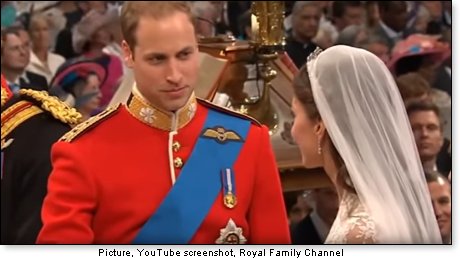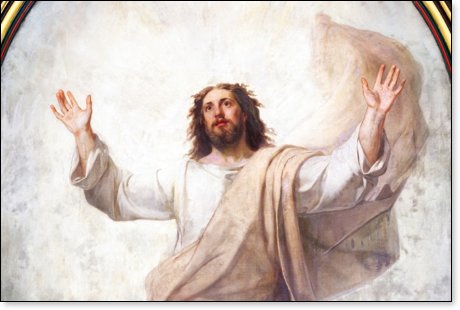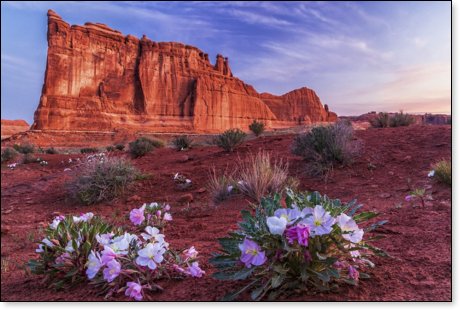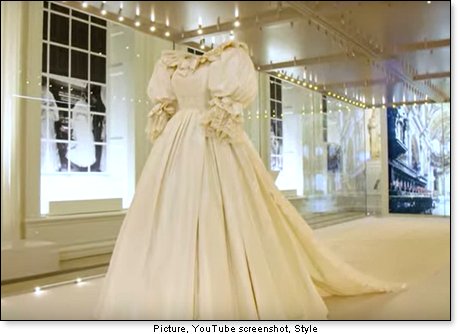
Rev. Mark H. Creech

Marriage ceremonies are celebrated in diverse ways around the world. The institution of marriage between a man and a woman transcends cultural boundaries and eras. Throughout history, it has been marked by grandeur, tradition, and unique customs, each reflecting the love stories and backgrounds of the couples involved.
Few events capture the world’s attention and imagination the way royal weddings do. I feel fortunate, (as I’m sure many others feel the same) to have witnessed three royal weddings in my lifetime: the regal wedding of Prince Charles and Lady Diana Spencer to the modern-day unions of Prince William and Catherine Middleton, and Prince Harry and Meghan Markle. Each of these royal weddings was filled with magnificence and majesty, reflecting the times and the unique personalities of the couples involved.
All three amazing wedding ceremonies were held at iconic historic venues. The brides wore gowns made by the finest bridal designers. The guest list included royalty, world leaders, celebrities, and dignitaries. Each wedding was an international and highly anticipated high-profile event. Millions and millions of people worldwide watched by television or some other media coverage. Following the wedding ceremonies, the couples embarked on carriage processions through the streets. Each of these weddings was noted for their incomparable splendor and significance.
However, as Clarence Larkin says in his book, The Book of Revelation:
“There have been many royal weddings of international interest where the invited guests and spectators witnessed a spectacle magnificent in its appointments, and rejoiced in a union that bound together different nations. But the wedding of the Lamb and his Bride will surpass them all, for it shall unite heaven and earth in a bond that shall never be broken.”
Revelation chapter 19 prophesies this future event – the Marriage of the Lamb. The Scriptures say:
“Then I heard again what sounded like the shout of a vast crowd or the roar of mighty ocean waves or the crash of loud thunder: ‘Praise the Lord! For the Lord our God, the Almighty reigns. 7 Let us be glad and rejoice, and let us give honor to him. For the time has come for the wedding feast of the Lamb, and his bride has prepared herself. 8 She has been given the finest of pure white linen to wear.’ For the fine linen represents the good deeds of God’s holy people. 9 And the angel said to me, ‘Write this: Blessed are those who are invited to the wedding feast of the Lamb.’ And he added, ‘These are true words that come from God’ (Revelation 19:6-9).
Henry Halley of Halley’s Bible Handbook says that at the start of Revelation chapter 19 there are essentially two hallelujah choruses.
“The first chorus (1-5), expresses heaven’s joyous celebration over the destruction of Babylon,” says Halley. “The second chorus, in a swell of voices like an ocean’s roar and the roll of distant thunder, announces the Marriage of the Lamb to his true bride.”

The Marriage of the Lamb is not just something symbolic but a highly anticipated literal event in biblical prophecy that will take place in heaven, and signify the culmination of God’s redemptive plan and the union of Christ (the Lamb) with his bride (the Church).
There are no widely recognized celebrations today that directly mirror what makes up the Marriage of the Lamb. Nevertheless, we know something about what weddings were like in Jesus’ day and what they represent in the coming marriage of Christ and his Church. Warren Wiersbe, in Be Victorious, explains most succinctly:
“Jewish weddings in that day were quite unlike weddings in the Western world. First, there was an engagement, usually made by the parents when the prospective bride and groom were quite young. The engagement was binding and could only be broken by a form of divorce. Any unfaithfulness during the engagement was considered adultery.
“When the public ceremony was to be enacted, the groom would go to the bride’s house and claim her for himself. He would take her to his home for the wedding supper, and all the guests would join the happy couple. The feast could last as long as a week.
“Today, the church is ‘engaged’ to Jesus Christ; and we love him even though we have not seen him (I Peter 1:8). One day he will return and take his bride to heaven (John 14:1-6; I Thessalonians 4:13-18). At the Judgement Seat of Christ, her works will be judged and all her spots and blemishes removed. This being completed, the church will be ready to return to earth with her Bridegroom at the close of the Tribulation to reign with him in glory (see Luke 13:29; Matthew 8:11). Some students believe that the entire Kingdom Age will be the ‘marriage supper.’”
Larkin goes even further in detail, addressing questions that often arise about the identity of the bride – questions related to the differences between Israel and the Church, which some people confuse. He writes:
“We must not forget that there are ‘two brides’ mentioned in the Scriptures. One in the Old Testament, and the other in the New. The one in the Old Testament is Israel, the Bride of Jehovah; the one in the New Testament is the Church, the Bride of Christ. Of Israel, it is said, [‘For your Creator will be your husband’ Isaiah 54:5-8]. Because of her whoredoms, Israel is a cast-off wife, but God, her husband, promises to take her back when she ceases from her adulteries. (Jeremiah 3:1-18; Ezekiel 16:1-63; Hosea 2:1-23; 3:1-5). She will not be taken back as a virgin but as a wife. But it is a virgin that the Lamb (Christ) is to marry. So, the wife (Israel) of the Old Testament cannot be the bride (virgin) of the New Testament. Again, the wife (Israel) is to reside in the earthly Jerusalem during the Millennium, while the bride (the Church) will reside in the New Jerusalem. These distinctions make it clear that Israel cannot be the ‘Bride’ of Christ. We must remember that John did not call the bride – [his]wife, until Revelation 21:9, which was after the marriage, when she was no longer a bride but a wife.
“The Bride of the Lamb is from a disowned and outcast race, made so by the disobedience of the head of that race in the Garden of Eden, but the bridegroom saw her and loved her. To redeem her he came from his own lovely home in heaven to her sin-cursed home on earth, where he was rejected by members of her family, and seized and subjected to a mock trial, and nailed to a cross as a malefactor, where he laid down voluntarily his life for her, thus demonstrating his love, and opening up the way for her redemption from the law that held her in bondage. He then left her to return to his Father’s house to prepare a home for her, and during the period of her betrothal he has left her with his own family, simply sending the Holy Spirit to teach and protect her, and fit her for the day of her marriage, when he will descend into midair to meet her on her way to the bridal halls of heaven (I Thessalonians 4:16-17).”
What is described here is a sacred tapestry of divine love woven throughout both the Old and New Testaments. These two narratives are like two bright glistening stars in the vast cosmos of God’s word.
The wife of the Lord, Israel, is characterized by her unfaithfulness, her infidelity. But her husband, the Lord, stands as a testament to enduring covenantal love. He pursues her relentlessly despite her harlotries. One day, in the latter days, he will win back her heart and she will come home to him.

The height and depth of the husband’s love for his wife, Israel, is a poignant reflection of the divine grace that perseveres through the worst of human frailty and betrayal, promising a future where the flowers of reconciliation and restoration will bloom in the desert (Isaiah 35:1-2), streams will flow in the wasteland (Isaiah 45:2), and desolate land will be turned into a fruitful one (Ezekiel 36:35). God will restore Israel to himself and ultimately keep all of his promises to Abraham, Isaac, and Jacob.
In contrast, the Bride of Christ – that radiant assembly of believers from Pentecost to the Rapture – exemplifies the unspeakable redemptive and transformative power of Christ’s sacrificial love, where he, the Lamb of God, voluntarily and substitutionally laid down his life to redeem and purify his beloved. These two extraordinary love stories, one from ancient times and the other from the dawn of the New Covenant resonate with the timeless message of God’s passionate pursuit of sinners alienated and separated from him.
No wonder the Marriage of the Lamb and the tremendous celebration that follows it, the Marriage Supper, is announced with mighty praises, gladness, and exuberance!
Larkin adds, “If there is joy in heaven over one sinner who repents (Luke 15:7), and that joy is the joy of the Father, how much greater will be the joy of the Father when he shall behold the consummation of his plan for his Son in his marriage to his Bride, the Church.”
It is also notable that Jesus began his ministry by attendance at a wedding – the most joyous occasion in Jewish life. What does this say about the Lord’s relationship with joy and happiness? It suggests that both, including their accompanying synonyms are God’s great desire for his people, the Church.
Something the late James Montgomery Boice, once pastor of the renowned Tenth Presbyterian Church in Philadelphia, said about Jesus’ attendance at the wedding in Cana is truly a breath of fresh air, and a departure from ordinary thought.
Boice asked, why do you suppose Jesus was invited to the wedding? His answer? “Jesus was always welcomed among those who were having a good time.”
There you have it. Jesus enjoyed a wholesome good time and he enjoyed it when others were having the same.

Delight, elation, gladness, thrill, exultation, glee, jubilation, gaiety, and merriment, are at the heart of the Christian experience, and there is every reason for this to be the case. The believer’s sins, past, present, and future are completely covered and forgiven by Christ’s atoning blood. The Spirit of God is always present to comfort, instruct, and lead. Everything bad that comes into the child of God’s life is seized by God’s grace and overruled for good. Any meaningful loss suffered shall be overturned at the resurrection. There is the assurance of heaven’s bliss and the glories of eternal life. What joy!!!
Someone once summed it up, saying, “If you are without Christ, you have nothing, if you have Christ, you have everything you need and more.”
The Psalmist said, “You will show me the way of life, granting me the joy of your presence and the pleasures of living with you forever” (Psalmist 16:11). Jesus expressed his desire for his disciples to experience his joy and for their joy to be complete through their relationship with him. He said, “I have told you these things so that you will be filled with my joy. Yes, your joy will overflow!” (John 15:11). The apostle Paul said the fruit of God’s Spirit working in someone’s life is joy (Galatians 5:22-23). Paul admonished, “Always be full of joy in the Lord. I say it again—rejoice!” (Philippians 4:4)
Boice continues:
“I am afraid that if some Christians I know were the pattern, there would be very little to expect of true happiness or good times in the Christian life. Some Christians go around with grim looks and long faces. If they ever find themselves in the company of someone else who is having a good time, they immediately suspect that the cause of the fun is either illegal, immoral, or fattening. Jesus was not like that. He did not condemn those who were enjoying themselves, and he was not jealous of them. As a result, he was welcome at their gatherings…I believe, of course, that there may be environments from which most Christians should stand free. Yet we often apply that thought adversely and forget to be cheerful. Charles Spurgeon once wrote to his students: ‘Sepulchral tones may fit a man to be an undertaker, but Lazarus is not called out of his grave by hollow moans.’”
Christians who make up the Bride of Christ should be characterized by cheerfulness. The Marriage Supper of the Lamb, which follows the Marriage of the Lamb and is in the future of every lover of Christ. It’s going to be the biggest, most extravagant, fun-filled, joyous party and celebration known to humanity. So, whatever is happening, no matter how bad, for the believer it’s not going to last and the best is yet to come! Oh, happy day!
Here comes the bride, said the apostle John. She “has prepared herself. She has been given the finest of pure white linen to wear. For the fine linen represents the good deeds of God’s holy people” (Revelation 19:8).
Lady Diana Spencer, who became Princess Diana upon her marriage to Prince Charles, made extensive preparations for her wedding in 1981. Her wedding gown was most memorable. It was fashioned with ivory silk taffeta and featured a fitted bodice, a voluminous skirt with layers of tulle and lace, a 25-foot train, and puffed sleeves. It was adorned with thousands of hand-sewn pearls and sequins. Her gown was a masterpiece and Lady Diana, the Bride radiated an ethereal and timeless beauty that left the entire world spellbound.

In the days of old, a bride would make her own wedding garment. The idea of the bride preparing herself suggests the preparation and sanctification of believers. It implies that followers of the Savior have actively participated in their spiritual growth and readiness for his return. The fine linen of the bride’s gown represents the righteous acts of God’s holy people. These righteous acts are an important aspect of the believer’s life and preparation for the Marriage of the Lamb.
In Exploring Revelation, the late John Phillips wrote:
“During his earthly pilgrimage, the believer prepares himself for this day. The garments which beautify the bride are said to be given her because any good work, any righteous deed, any praiseworthy act we do is the work of the Holy Spirit in us. ‘Work out your own salvation,’ says Paul; then he adds at once, ‘It is God which works in you both to will and do of his good pleasure’ (Philippians 2:12-13). The righteous acts of the true church, performed while on earth and from which the world benefits more than it knows, becomes the fine linen, clean and white in which the bride is arrayed to go forth to meet her groom.”
The late Charles C. Ryrie, in his book Revelation, has added the bride is the bride because of the righteousness of Christ, the bride’s wedding gown will be made up of the righteous deeds that she has done in life.
Revelation, apocalyptic literature, doesn’t speak directly about the Judgment Seat of Christ, which is a judgment of believers. This teaching is explained, mostly by the apostle Paul, in other New Testament passages.
The believer’s judgment takes place in heaven before the Marriage of the Lamb and the Marriage Supper (I Corinthians 3:10-15; I Corinthians 4:5; II Corinthians 5:10).
The Judgment Seat of Christ will sort everything out. The bride must be made ready, prepared. All of her works must be judged as to their purity. She must be purged of works done in the Lord’s name which were of mixed or tainted motives, only what was done wholly for the glory of God will be left to adorn her on that blessed day when she and her beloved are forever joined.
Yes, indeed, as the angel proclaimed with excitement, “Blessed are those who are invited.”
© Rev. Mark H. CreechThe views expressed by RenewAmerica columnists are their own and do not necessarily reflect the position of RenewAmerica or its affiliates.




















